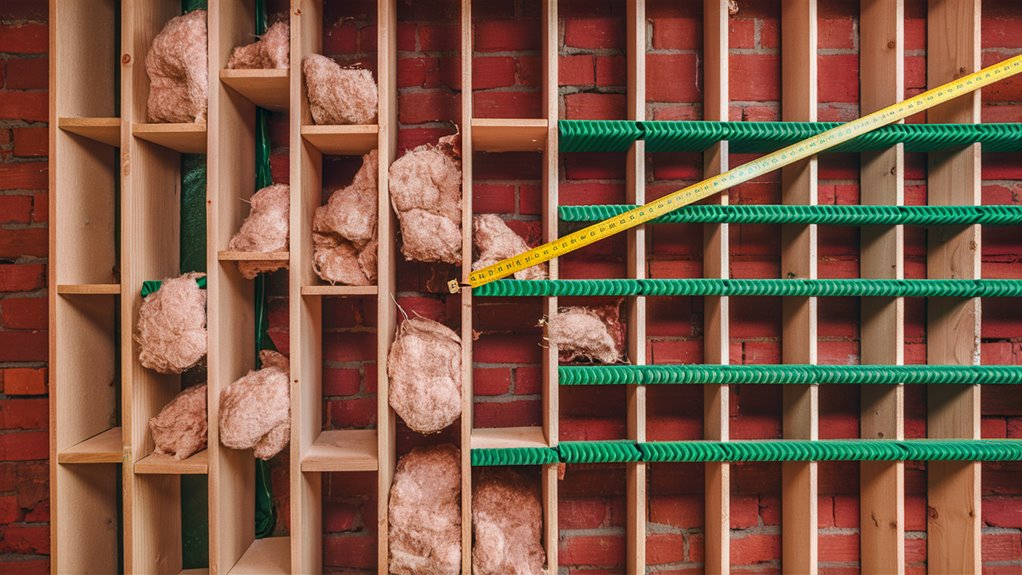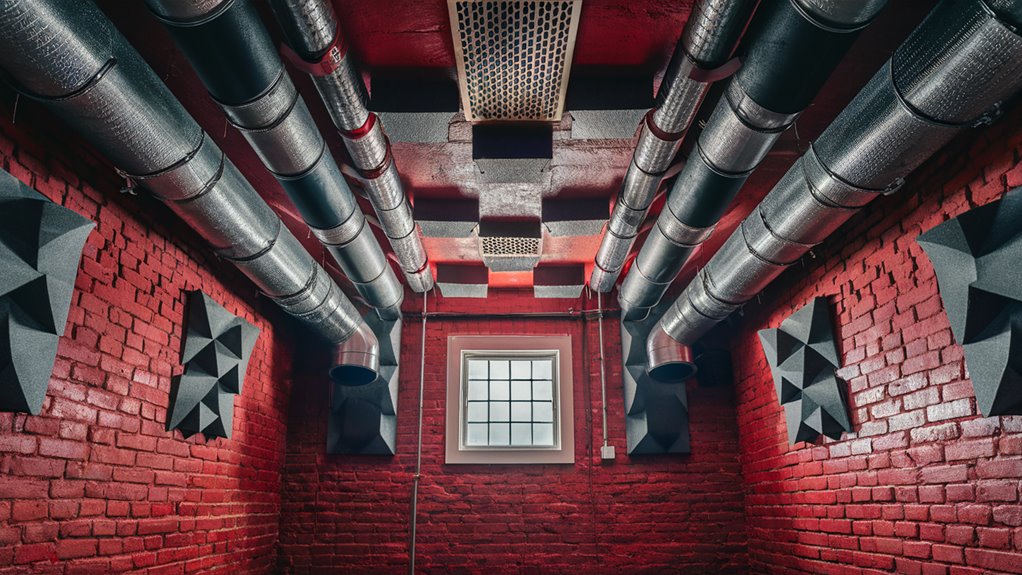Table of Contents
ToggleBass and Bricks: Build Karaoke Rooms Right

Key Space Needs and Build Basics
To make a top-notch karaoke room, you need a set plan and focus on sound setup. Start with a room of at least 120 square feet with walls not facing each other to cut down on echoes and sound, bouncing back and forth. To start strong in sound blocking, use two layers of 5/8″ drywall on staggered frame pieces to hit an STC of 55 or more. 호치민 KTV
Top Soundproofing Stuff
Use thick mineral wool in your walls (3.5 lb/ft³) to soak up sound. Put heavy vinyl layers between drywall to block more noise. Place 4-inch thick traps made of 6.0 lb/ft³ fiberglass at each corner to handle bass and keep the sound clean.
Setting Up Sound and Air Flow
Put speakers up high, 7 feet, at 45-degree angles for best sound spread. Use low-speed air systems that stay under 800 RPM and add sound mufflers in your ducts. This keeps your sound setup true while the room gets the fresh air it needs.
Room Size and Shape for Karaoke
Necessary Size for Great Sound
The size of your karaoke room impacts sound quality and voice clearness. The smallest size we suggest is 120 square feet to fit 4-6 people and have ceilings around 8 to 10 feet high. Bigger rooms call for more sound work to stop echoes and keep sound clear.
Best Room Layout
Rectangular rooms with walls that aren’t parallel give the best sound by stopping echoes and repeat sound waves. The best room shape fits the 2:3:5 rule seen in rooms that are 8′ x 12′ x 20′.
More on Sound Handling
Calculating room modes helps find and fix sound issues, letting us set targeted sound measures right. Keep at least 3 feet between people singing and walls to cut down on echo and keep the voice clear, making a top spot for singing.
Walls Built for Quiet in Karaoke Rooms
Must-Have Wall Layers
Great sound starts with double-layer walls. Put up two layers of 5/8″ drywall on staggered frames to reach at least 55 STC. Add damping glue between layers to cut sound by 3-5 dB.
Better Isolation Moves
Fit channels every 24 inches between frames and the first drywall to stop sound. Fill walls with thick mineral wool for best bass soaking. This setup cuts noise by 40-45 dB from 125Hz to 4kHz.
Seal It Tight
Good sealing needs careful work at all opening points. Use acoustic caulk at all gaps and cover electric boxes with soundproof padding. For the best results, use walls that float with clips that separate them from ceiling beams, cutting sound by an extra 5-7 dB.
All About Picking Muffling Goods
Important Materials and Details
Sound work has shown that using the right muffling materials goes a long way in karaoke rooms. Heavy vinyl (MLV) that is 1 lb/ft² makes a solid base, stopping sound across the key range of 125Hz to 4000Hz.
Best Ways to Layer for Quiet
The best way to stop sound is by layering. Start with 5/8″ muffling drywall, then a 2″ air space with mineral wool (3.0 lb/ft³ density). Put a layer of Green Glue before another acoustic drywall layer. This expert setup gets you a noise block of 65+ STC.
Work on Low Sound and More
For top low-sound control, set up thick bass traps– at least 4 inches in room corners, using heavy fiberglass (6.0 lb/ft³). This cuts down 15-20dB at 63Hz. Handle other sounds with 2″ panels of NRC 0.95 or more, placed 16″ apart on walls and ceiling to stop echoes and sound waves repeating.
Designing Bass Traps

Where to Put and Build
Bass trap plans rely on smart placement in key sound spots. The two best spots are where walls meet ceilings as this is where bass gathers. Wide-range absorbers need at least 4 inches in depth, 6-8 inches best, to handle sounds under 100Hz.
Choosing the Right Materials
Porous catching materials are made from stiff fiberglass (6 pcf at least) or thick mineral wool (8 pcf at least). Corner traps work best in triangle shapes with at least 24 inches of face width, going from floor to ceiling for full effect. Plywood-faced traps work best with 1/8-inch fronts and a 3-4 inch air gaps.
Top Setup Moves
Soffit-style traps at wall-ceiling joints should go 16-24 inches across both vertical and horizontal spaces. This setup reduces bass by 6-12dB from 40-100Hz. Use varied absorption numbers, aiming for 0.8 or more at 125Hz and lower.
Big Ceiling and Ground Sound Work for Karaoke
Top Ceiling Plan
Ceiling sound planning needs the right steps to up sound quality. Set up a hanging ceiling with high grade sound tiles, leaving 8-12 inches of air space for better bass soaking and space for other building needs.
Ground Build Focus
Future-proof ground work focuses on floating builds. Start with heavy vinyl (MLV) at least 3/8 inches thick, weight rated at 1 pound per square foot. Pair this with strong underfoot layers that give over 20 IIC points of noise stopping.
Key Corner Handling
Bass sound needs special care where ceilings meet walls. Set 2-inch panels at 45 degrees to make effective bass traps. This setup mainly looks after 125-250 Hz sounds that often mix up in typical karaoke room sizes.
Keep Karaoke Rooms’ Air Quiet
Top Duct Muffler Moves
Karaoke air systems need well-placed top-notch mufflers. Fit mufflers that cut at least 25 dB of sound from 125-4000 Hz. Put these key parts both before and after the air handler to really cut down on machine sound moving around.
Cooling Specs
Slow-moving fans keep it under 800 RPM so sound stays under NC-25. Key air ways need heavy wrapped vinyl (1 lb/sq ft at least) and flexible seals at machine links. Angled turns with blades beat straight paths for cutting noise.
Air Moving Design
Sound-lined move ways need at least 3-foot runs for best sound control. Build these with double walls and a 2-inch air gap stuffed with mineral wool (3 pcf density). Seal all joints with mastic to stop sound leaks and keep systems running smooth. This full plan gets max sound block in pro karaoke spots.
How to Mount Speakers in Karaoke Rooms
Main Speaker Spots
Best speaker height in karaoke spots is 7 feet up, set at 45 degrees toward the sing area. Strong sound systems have 12-inch woofers with 400W RMS drivers per channel for top voice and tune play.
Key Subwoofer Spots
Best bass comes from subwoofers in corners on the ground. Pro mounts use M10 threads with rubber stops to stop shakes. Rooms up to 400 square feet need at least two 15-inch subwoofers for full bass reach. How to Choose the Best Karaoke Service for Your Wedding
Monitor Setup
Key sound checks need four 6.5-inch monitor speakers up 4 feet, set 30 degrees apart aiming at the sing spot. Smart time-setting adds 3-5 millisecond delays to stop sound mix-ups.
Safe Mount Musts
Strong mount pieces need steel brackets rated for 5x the speaker weight, with extra safety wires. Sure mount steps use strong bolts with lock washers, each set tested to hold 100 pounds without fail.
